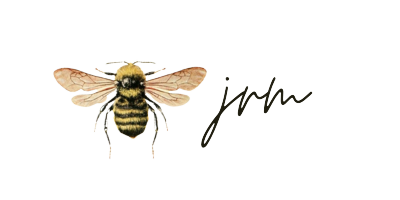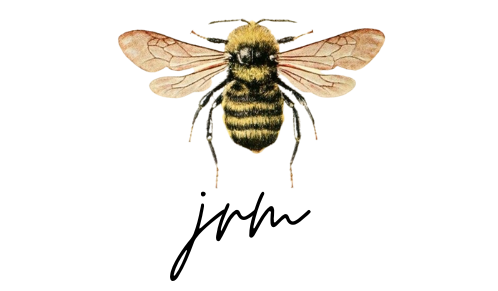Normandy is split into two halves – Haute-Normandie and Basse-Normandie. Previously, I lived in Haute-Normandie, which is itself split into two smaller sections. My former sleepy little city, Evreux, heads up the smallest region, Eure, and did not feel like any kind of capital (ahhh, just like home!). The larger region is Seine-Maritime, where the River Seine cuts through on it’s way to Paris. The capital there is the port city of Rouen.
I often went through Rouen to get home from other places, especially when my train or whole line from Paris was down. Because it is a larger city, it has a large bus station, so I could get the train there, walk through the city down to the bus station, and get home that way. It took three times as long and I had to pay twice as much for the privilege, but sometimes you just have to get home (you know, for tedious things like ‘jobs’, so that you can – let me check my notes – ah, right: keep eating and paying rent. Oh, and not get deported!).
So I had been through the town several times. I often did a quick little grocery shop there because the store by the bus stop stayed open later on a Sunday (when all the shops in my own town would have already shut, if they had opened at all). I also had a favourite café nearby, because the train and bus schedules never quite lined up. This café was called “Social Perk”, which is a play on the coffee shop in the TV show Friends called “Central Perk” (which is in itself is a play on Central Park, but I digress). There, I could get a large mug of decent hot chocolate, and sit and watch Friends to my heart’s content. The whole place was themed to match the show, complete with one lavender door and empty yellow picture frame. It’s the little joys in life.
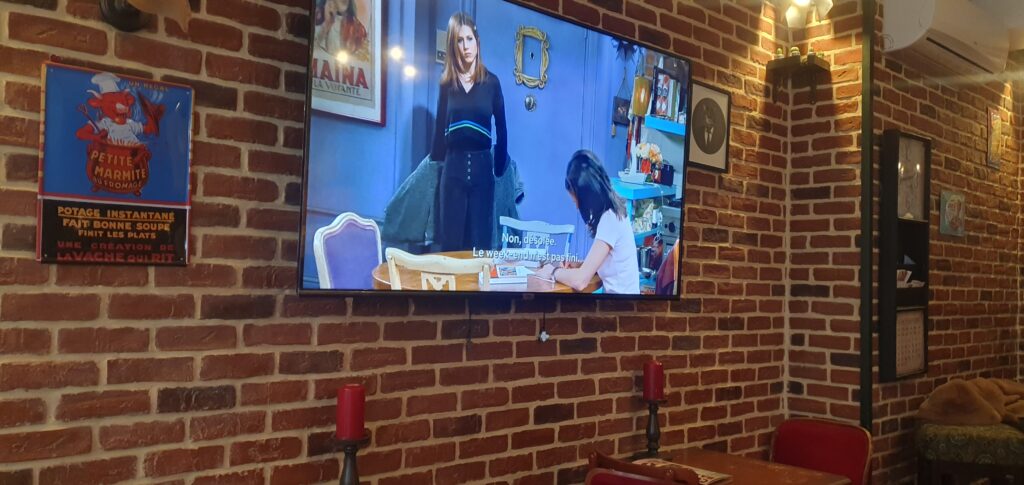
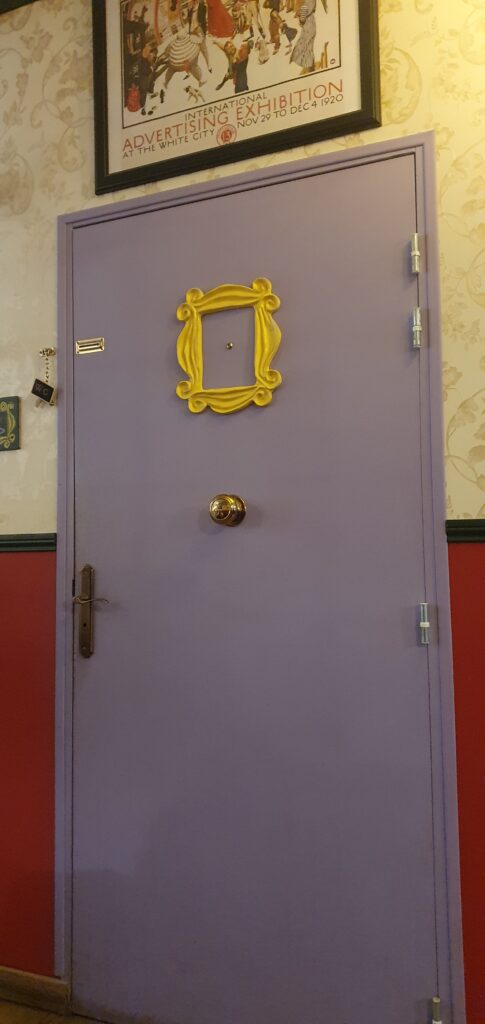
But passing through is never the same as a real visit, so I spent one weekend there just to do the things I had never managed to have time for before while waiting for my bus.
And what a rich visit it was! Notwithstanding the fact that I totally lost my wallet on the bus (flipped out apparently and I didn’t notice), which ended up being a whole drama (although really I was EXTREMELY lucky and the nicest person in the world picked it up and handed it in), it was still totally worth it.
We’ll begin, as the title teased, with Joan of Arc – or in French, Jeanne d’Arc (the pronunciation only the faintest echo of the spelling). A bit of history revision: Joan of Arc was famously burned at the stake as a witch and a heretic, after claiming that angels and saints had been speaking to her, saying that she would help deliver France from English control. She lead multiple sieges before the coronation of Charles VII as King of France, which were successful, and participated in several after, which were not (interestingly, her visions had only said she would essentially see to the coronation of Charles VII, so that fact that everything after failed feels like a very poignant point in the story). She was captured during one such siege, and was then (seemingly under pressure from the English, who at this point had been shown up quite a lot by a 19-year-old girl) tried as a heretic, and pronounced guilty.
Later, her mother and brothers pushed for a re-trial, and after a few false starts, received approval for one from the pope, more than twenty years after her death. And what do you know? They cleared her name retroactively – but it didn’t bring her back from the dead. So I guess then they made her a saint.
Rouen was one of the largest and most prosperous cities of medieval France, and the story of Joan of Arc has only further solidified it’s place in history.
Okay, you’re all caught up.
We’ll start our journey outside the Eglise Sainte-Jeanne-d’Arc, the Church of Joan of Arc. Here there is a large garden with a small plaque denoting that they have covered the place where Joan of Arc was burnt with a sea of flowers.
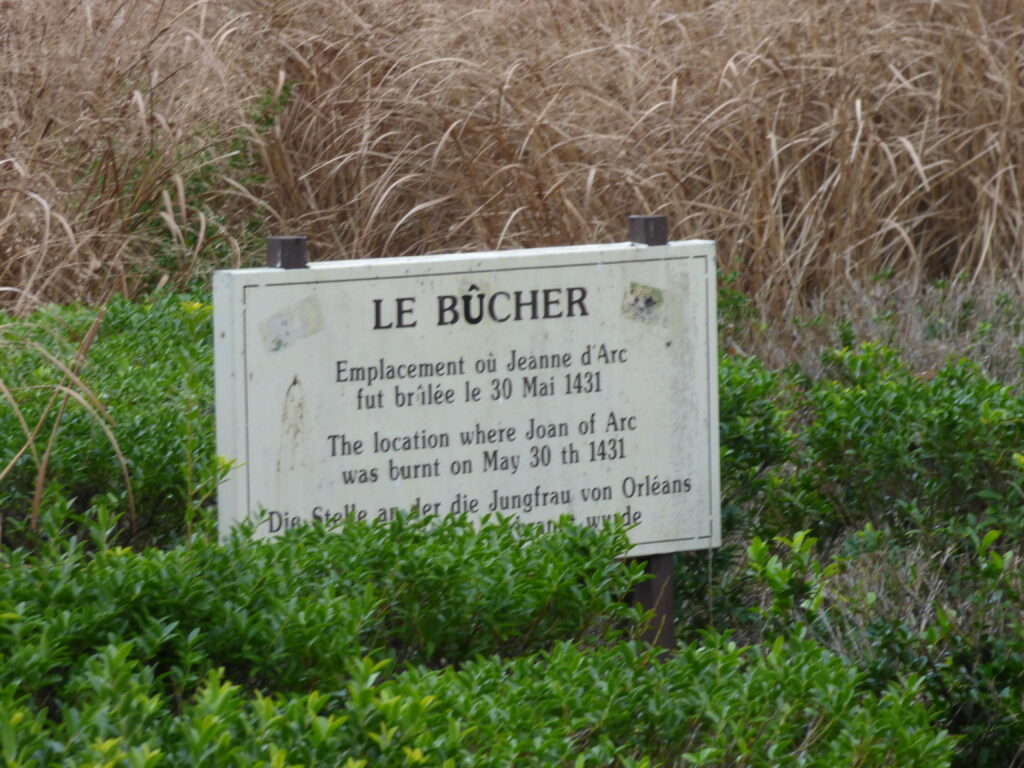
A local market is also right by there (with a very over-powering fish section, I’m sure you can imagine).
Then we have the church itself – a striking building due to its exceedingly unusual shape.

(A picture because I cannot do it justice, although honestly neither does the picture. Apologies.)
It’s interesting to look at from the outside, and then inside it is filled with stunning floor to ceiling stained glass. This is so distracting, that it might be a few minutes before you notice the curve wooden slates on the roof, like you are looking up at a wine barrel, and yet you are also inside it. It is really, truly unique.
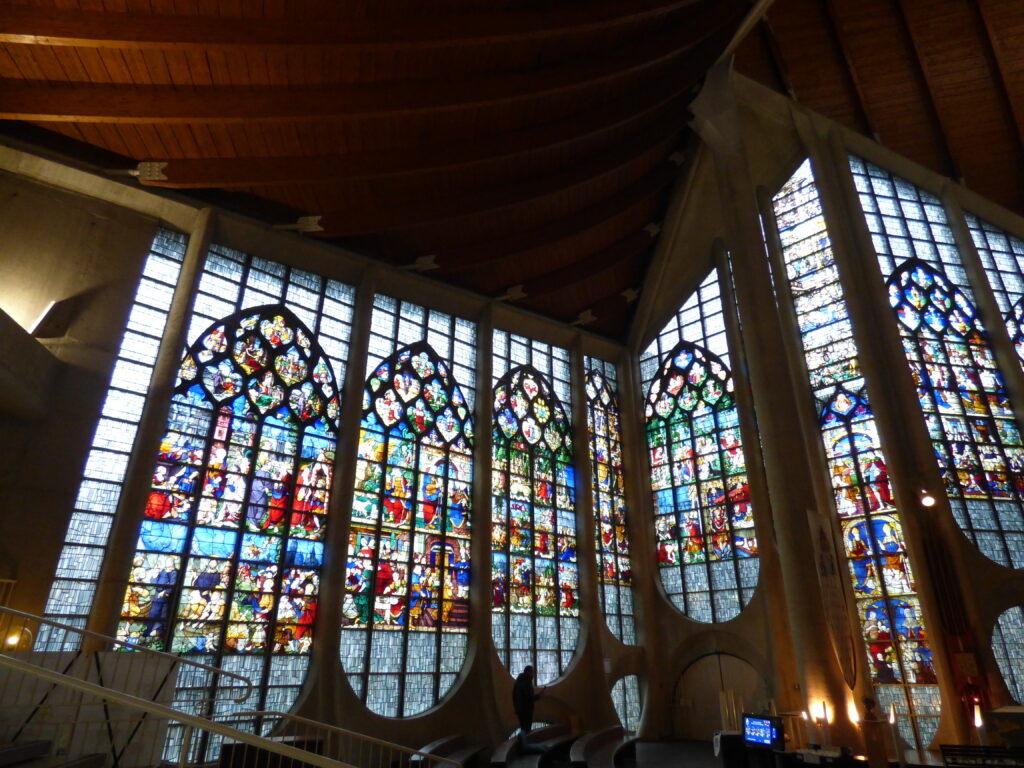
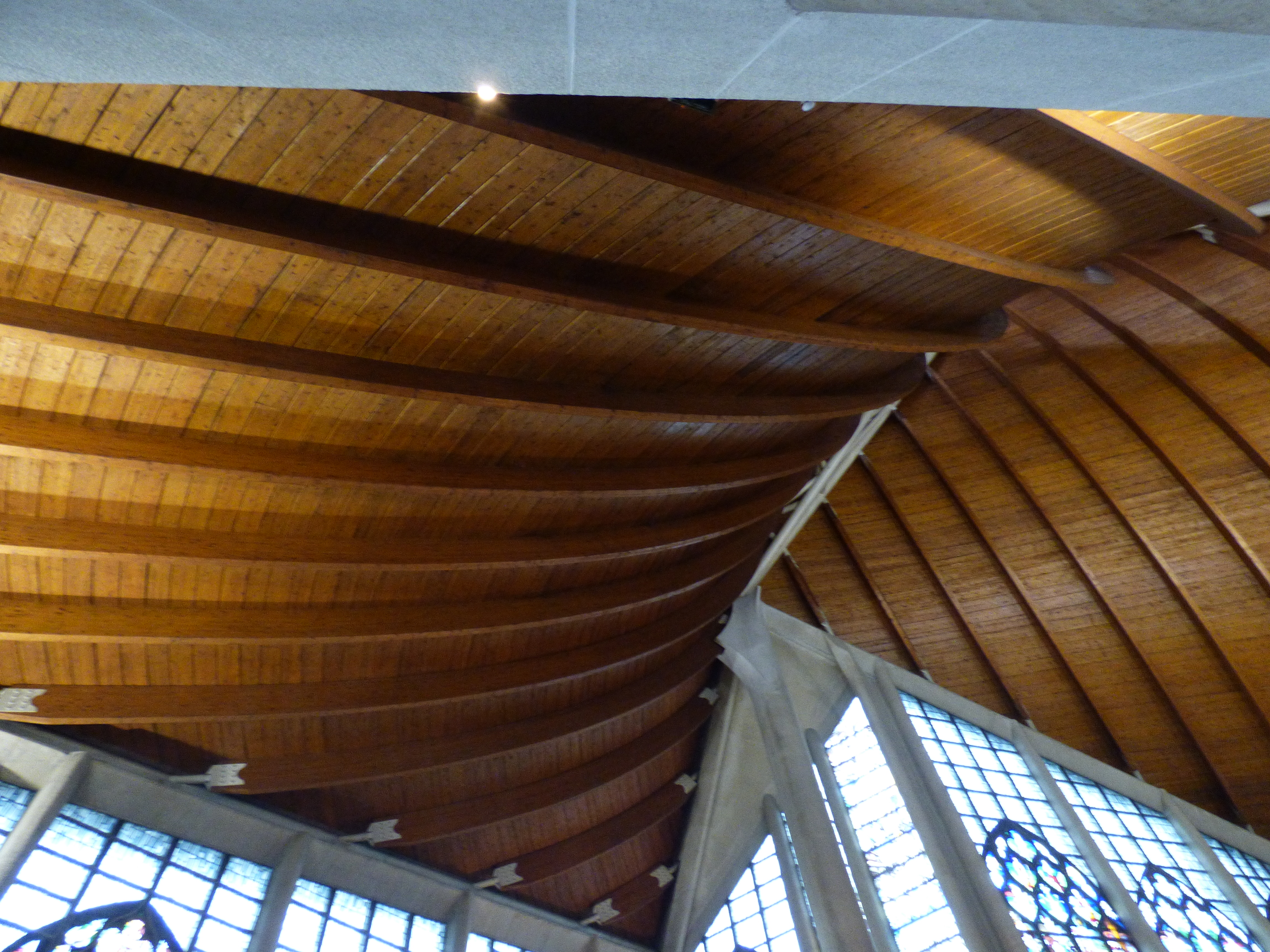
From here, it’s easy to head along to the Gros Horloge – an intricate 14th century Astronomical clock. I didn’t go inside as it never occurred to me that such a thing would be possible, but apparently it is. Still, I feel reasonably confident that the best view of the clock is from the outside.
Continuing along brings you the stunning gothic Rouen Cathedral, as featured by many artists, including Monet. Normandy surely must be one of the most painted regions in the world and honestly, I’m here for it. Love a landscape.
There are so, so many details to this building, a hundred or so saints and such depicted at various levels all the way up the building. It would take a long time to properly see everything. Teaser for next week: I had a beautiful, serendipitous moment here, that I’ve decided deserves it’s own special post.
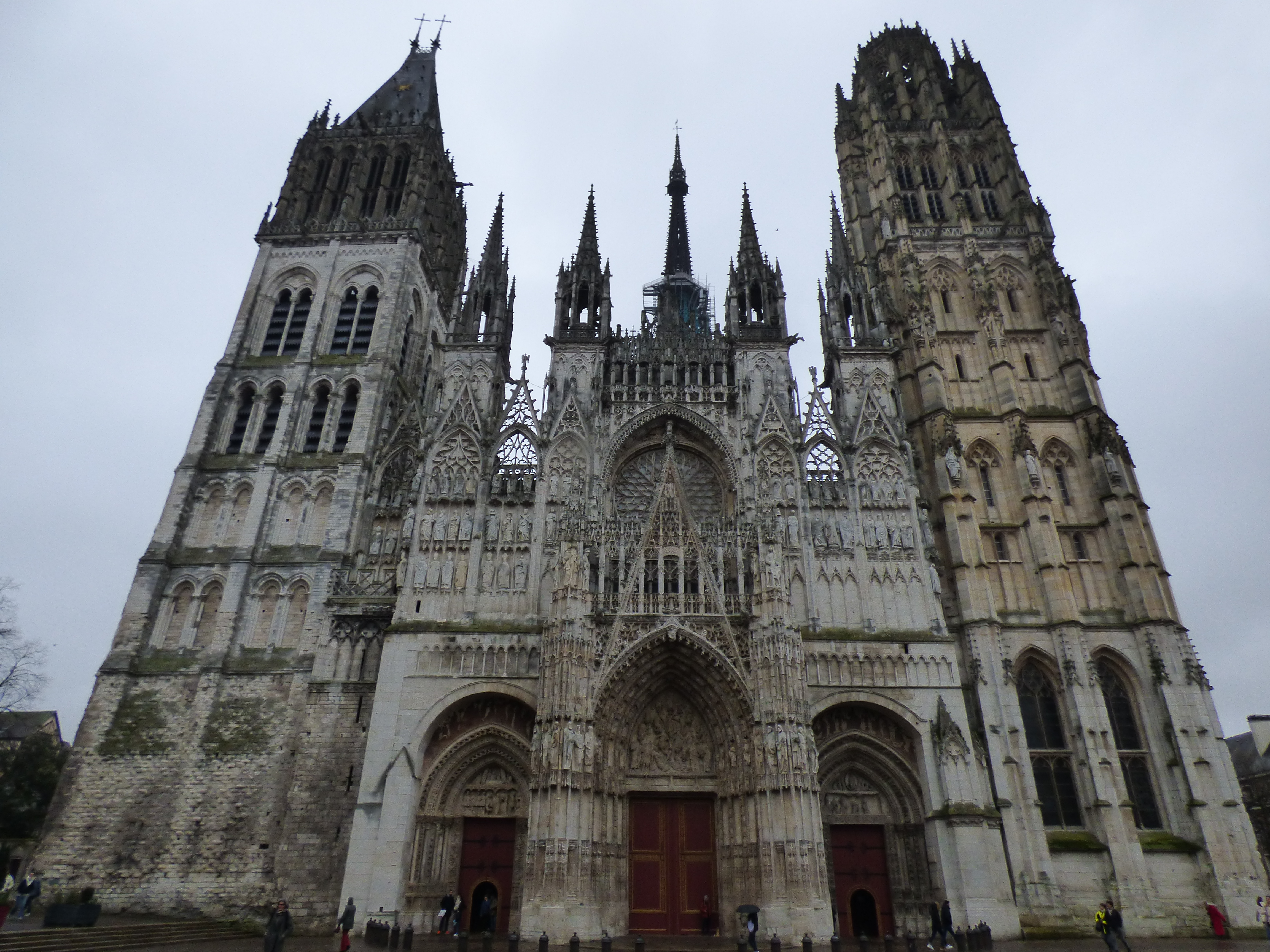
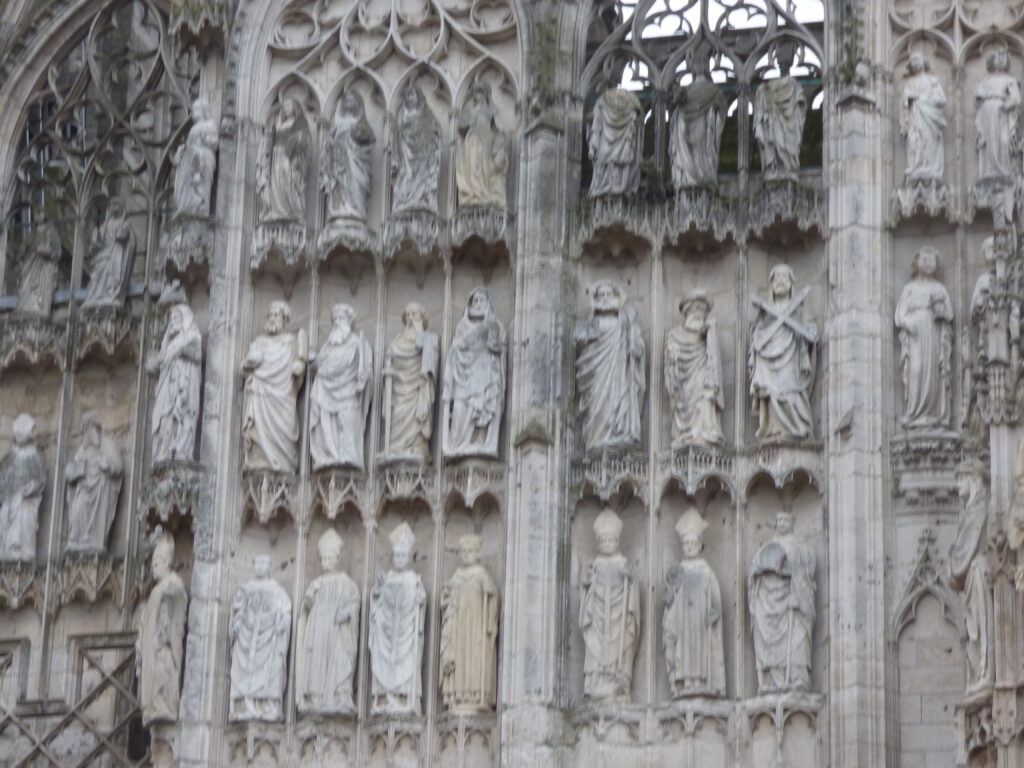
This is one of several churches and cathedrals in the city, my next favourite probably being Abbataile Saint-Ouen with its surrounding park.
Nearby, there is a beautiful shop: Dame Cakes. It’s a bit amusing because the French pronunciation of “dame” is more like the English “dam/n” – and Dame Cakes is a very upscale place and far above such language. It was recommended to me by a colleague and proved a top notch suggestion. It’s very beautiful, and I got to trial some Mariage Frères tea. This is a posh brand of French tea that I wanted to try, but it’s on the pricey side so I wanted to make sure I got something I liked. Going to Dame Cakes let me try before I buy.

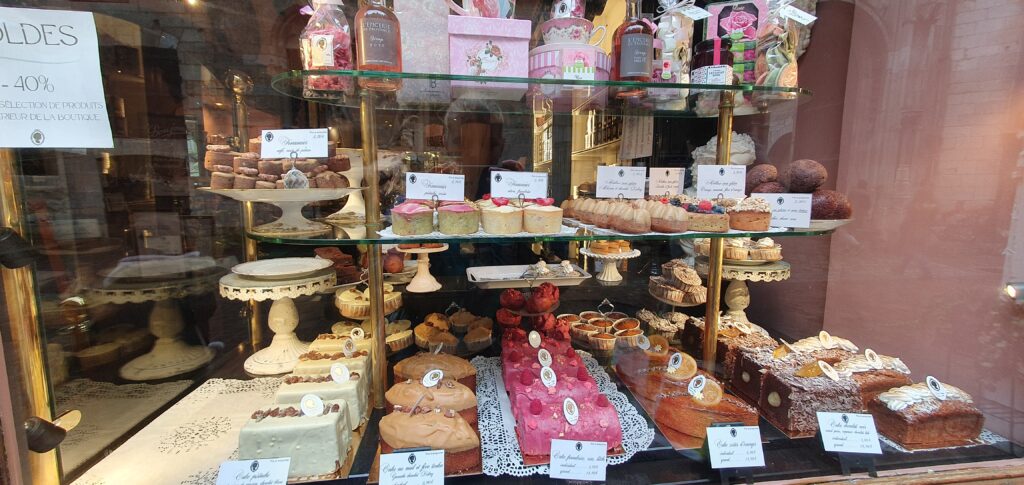
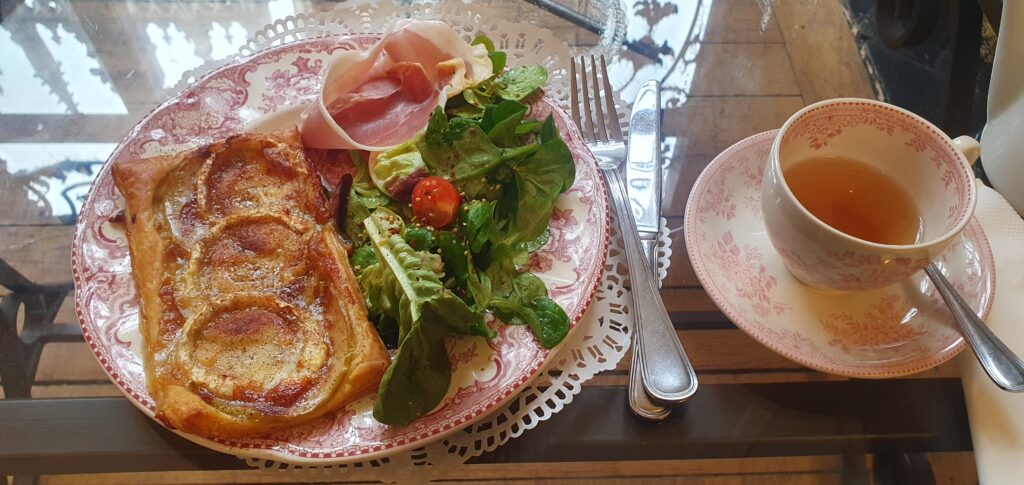
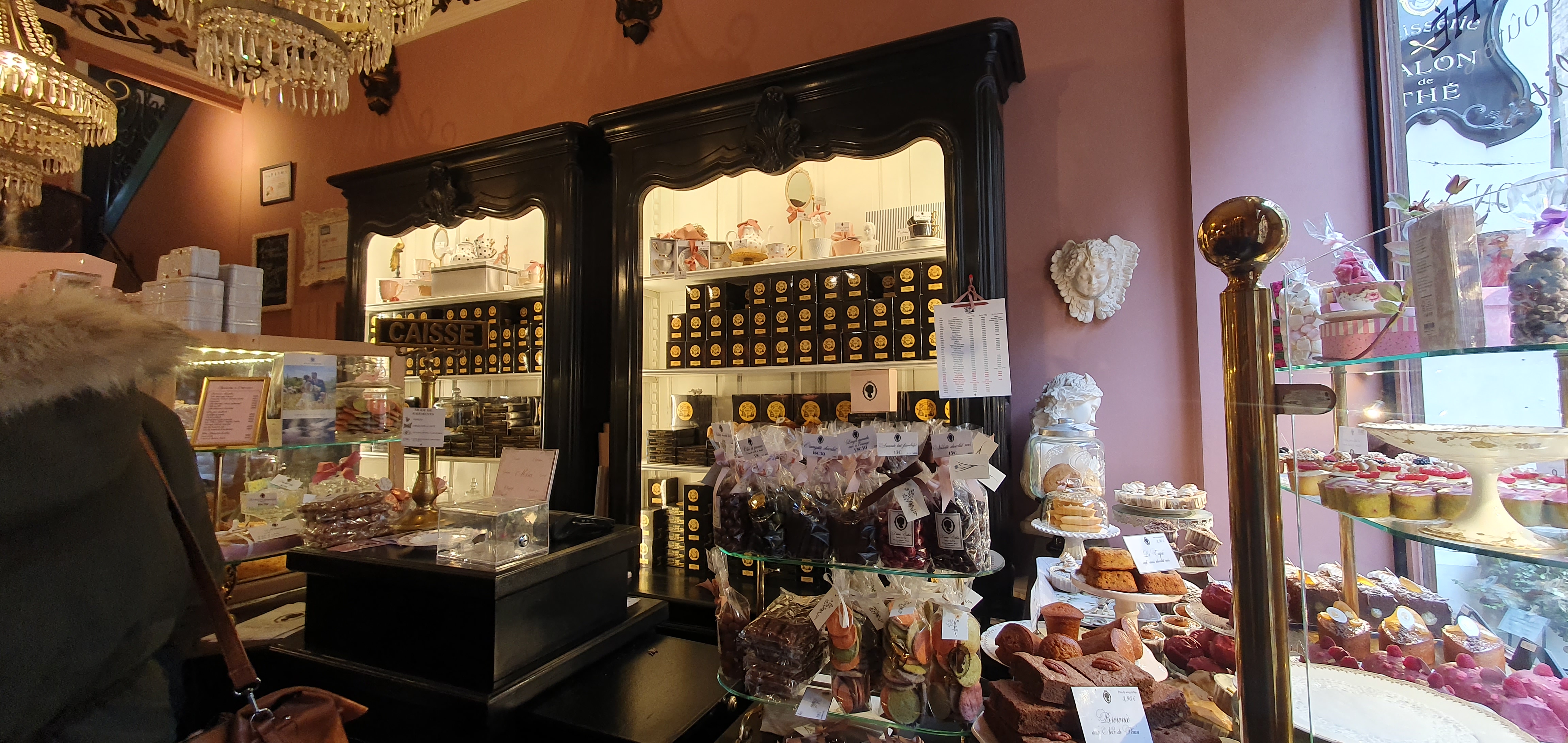
I looked into the shop first but it seemed I couldn’t get a table for lunch at that time, so actually, first, I decided to go do something else and double back towards the end of the French lunch period. This lead me to Historial Jeanne d’Arc. Honestly, I hadn’t been sure if I was going to go but then it was right there, I had the time, and in fact, I had less than a five minute wait to the start of the next session. Perfect timing. Now, prior to this, I had only heard of it as a “history museum” so I was unsure why I would need to wait. Well! This was no ordinary history museum.
In this museum. You follow a re-creation of the second trial of Joan of Arc – the one that happened after her death – as they recount and re-examine the evidence of the first trial. It is mostly done through videos projected on the walls of other features of this old building, or otherwise screens. It can be a little difficult sometimes to figure out which was to face, and then there would suddenly be projections all around you! So you do each section in a very paced manner, and cannot move onto the next section until the door opens automatically, to keep you moving in the correct direction. As it was, I had my session all to myself, and it is only at the very end on an open floor that I realised there had been people ahead and behind me the whole time. It was very interesting, and I have never been in another museum like it.
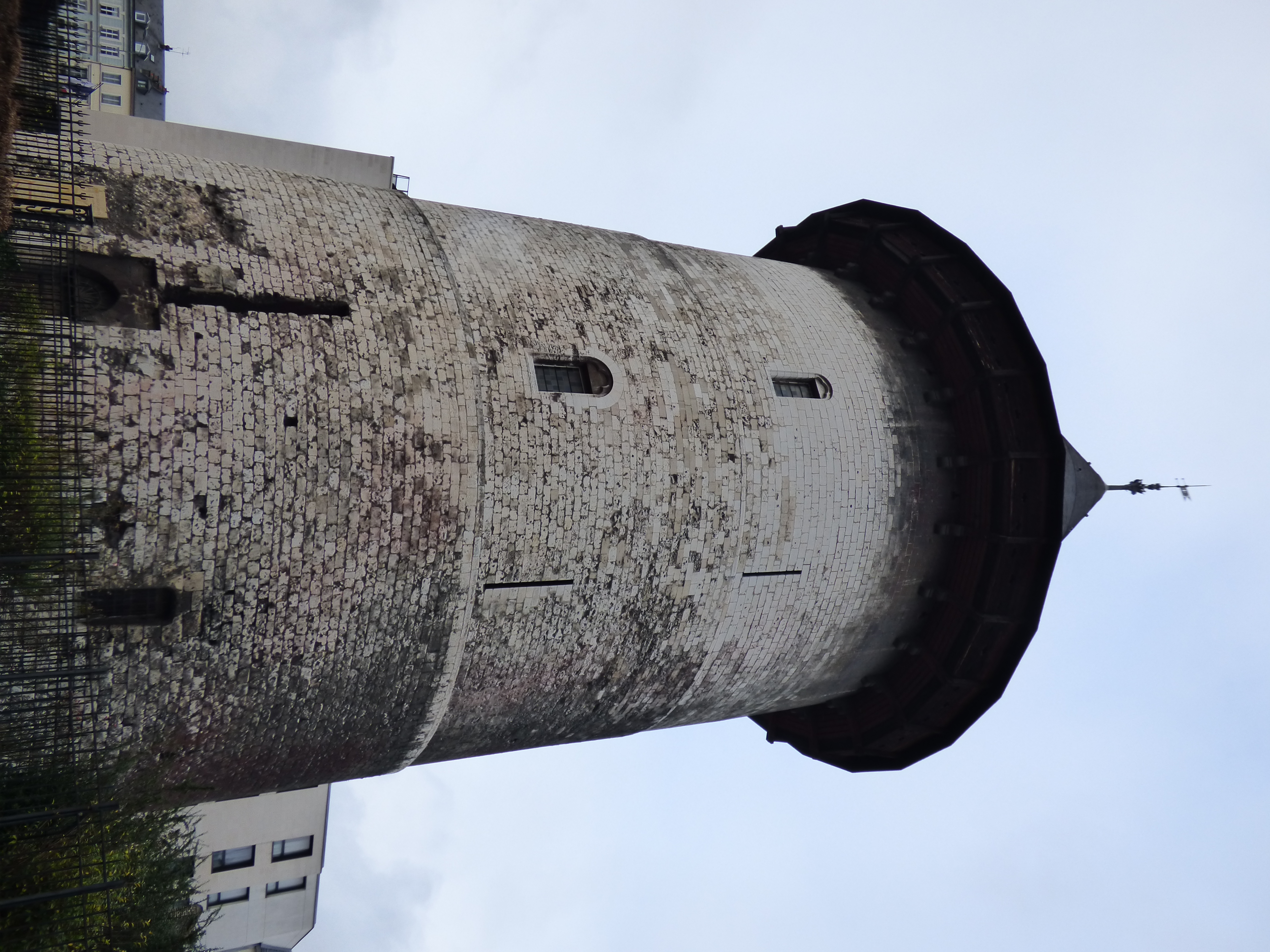
The final Joan of Arc site in the city is the Donjon de Rouen. It is a tower and all the remains of the castle where Joan of Arc was kept during her trial. These days, it is home to regularly changing exhibits, which recreate various historical scenes. While I was there, it was a recreation of a Nazi World War 2 office, I suppose you could say. It was set out with maps and uniforms and the like to examine, across two floors.
If you still want a little more history, just wandering around the city provides this. Rouen is famous for their upkeep of a medieval building technique, where the wooden beams are visible from the outside.
You can also stroll along the Seine and cross back and forth over the bridges. From Pont Pierre-Corneille you can see the two-lion emblem of Normandy, and along the bridge there is a series of flags from around the world.
The final stop I will take you to is by no means the least – not by a long shot! We head to the Fine Arts Museum, or Musee des Beaux-Arts de Rouen. And I loved it so much. Firstly, it’s free for all, not just people with a swanky Pass Education (like me!). I felt it had a good mix of what I like – which is mostly landscape paintings, I must admit. If people do have to be in it, I prefer when they don’t have faces. This sounds creepy, but actually it often feels very natural. For example, Monet’s women with umbrellas don’t actually have any facial features. It is quite typical of Impressionist painters, especially where people are not really the focus of the scene so much as the natural landscape. But I digress. Yet another good museum in Normandy! (Have I had a bad one? Well… I have a least favourite, and that is the most major city in the other half of Normandie, in Caen. Too many people in the paintings, too much modern art… but there was a still a section for me, with lots of seaside paintings, so even then, not a loss.)
Truly, there is so much to discover in Rouen, and I still didn’t get to it all (the Ceramics museum, for example – oh and I did make it to the Jardin des Plantes when I went back for my purse, but it was the wrong season for entry to the greenhouses, so obviously I have to go back again. You can surely see how my hands are tied). Writing this has made a little sad to be honest, thinking that I can no longer make a $20 round trip on some random weekend. Now it takes planning, and savings. Alas.
Still, I have other plans in the north of France yet, and really, it’s quite nice to think that I haven’t exhausted all the delights of a place I enjoyed. It’s a bit like re-reading a good book, I think – there is always something you didn’t notice the last time, or otherwise, you return as a different person and see things in a new way.
